Artichokes are in season and are great tasting vegetables, or, I should say… flowers!
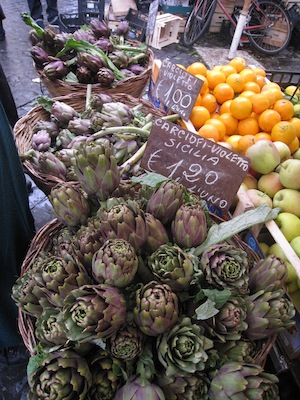
Violetto artichokes in Campo de Fiori market. Roma, 2011
In Italy, there are many different varieties that are usually not available in the US, such as the violetto, shown in the photo here.
Most of the American artichokes belong to the green globe variety. They are pretty large, usually weighing about 1 pound each. They have a nice nutty taste and do really well in most Italian recipes.
The American variety is said to acquire taste and tenderness when the artichokes are “frost-kissed,” as in the photo above.
Frost-kissed or not, no matter the variety, keep in mind the following rules when buying artichokes:
- The artichoke leaves should be tightly packed, and the color should be bright.
- The artichoke should feel heavy and compact. It should withstand pressure when squeezed.
- The leaves should appear full, fleshy and crisp.
- The cut end should be recent, not blackened.
- No black spots on leaves or stem.
- No wilted, dried out artichokes.
Artichokes have a truly unique and wonderful flavor: nutty and herbaceous, with a sweet finish. With them, you can make many amazing recipes.
Italians love them so much and prepare them in many different ways: simply boiled, in salads, in frittata, in risotto and pasta dishes, deep-fried or cooked “alla Romana”. Italy is in fact the second largest producer in the world.
But the use of artichokes is definitely less frequent in the US, even in restaurants. Many are in fact scared away by the cleaning process. But, really, there is nothing to be scared of. With a little bit of practice, artichokes can be cleaned really, really fast!
Here is a simple, step-by-step process to cleaning one of the most versatile and underrated produce treats.
You will need:
- 1 lemon
- 1 large bowl
- Chef’s knife
- Small knife
- Cutting board
- Small spoon
| Halve or cut the lemon in fourths, and roughly squeeze the juice into the large bowl filled with a couple of inches of fresh water. Toss the squeezed lemons into the water as well. | 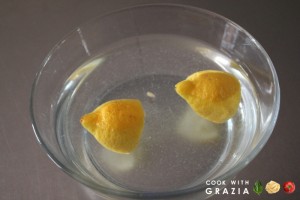 |
| Start by first removing the first few layers of external, harder leaves at the base. | 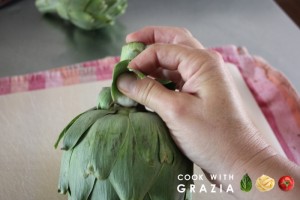 |
| Then, remove the next bottom layers by breaking the base of the leaf and pulling, trying to retain the tender base of the leaf. | 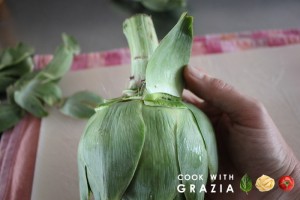 |
| Continue for 2-4 rows. | 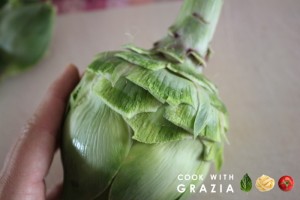 |
| Cut off the last inch or so of the stem. | 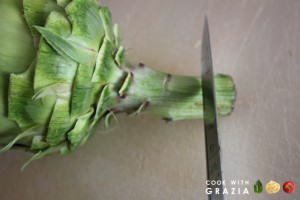 |
| Remove the outer layer of the stem. |  |
| Using your larger knife, cut off the top part of the artichoke, usually about half way up. Be conservative at first, and then eventually trim more if the remaining part still seems too hard.Now you need to remove the inner fuzzy part, the choke. | 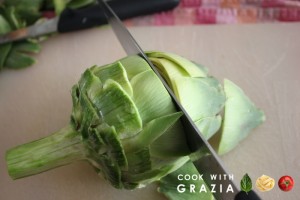 |
| Depending on your recipe, you may need artichokes to be sliced or whole (for example, for recipes that stuff the artichokes, as in the Carciofi alla Romana.). | 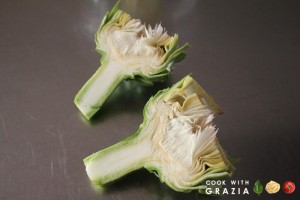 |
| In the first case the process is very simple, just halve the artichoke and, with the help of a spoon (a grapefruit spoon works great, if you have it), remove the choke. | 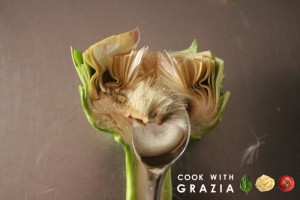 |
| Immediately soak the cut artichokes so that they don’t brown. | 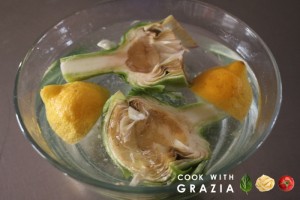 |
| If you need to keep the artichoke whole, first remove the small center leaves (they are usually different in color, either purple or white), with the help of a small knife | 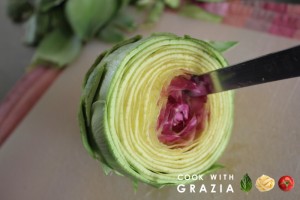 |
| …and with your hands… | 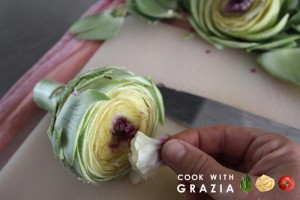 |
| …to unveil the core. | 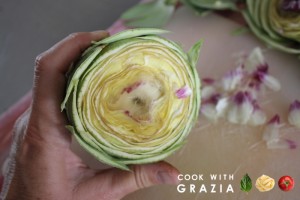 |
| With the help of a spoon, remove the hairy choke… | 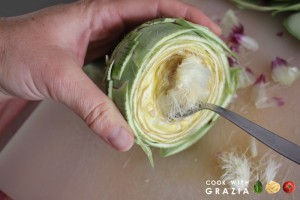 |
| … until it’s totally clean. | 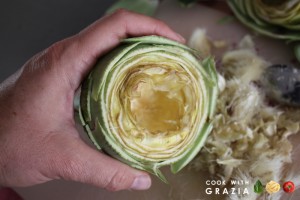 |
| Trim the outer of the artichoke to remove the hardest layer. Usually this step is necessary, but if you artichoke is quite tender already you may be able to skip this step. | 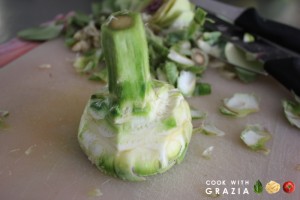 |
| You are done! Again, immediately soak the cut artichokes so that they don’t become brown.
You are now ready to enjoy your artichokes! |
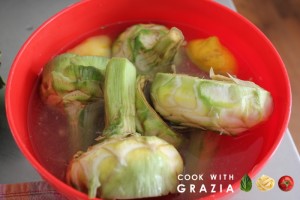 |


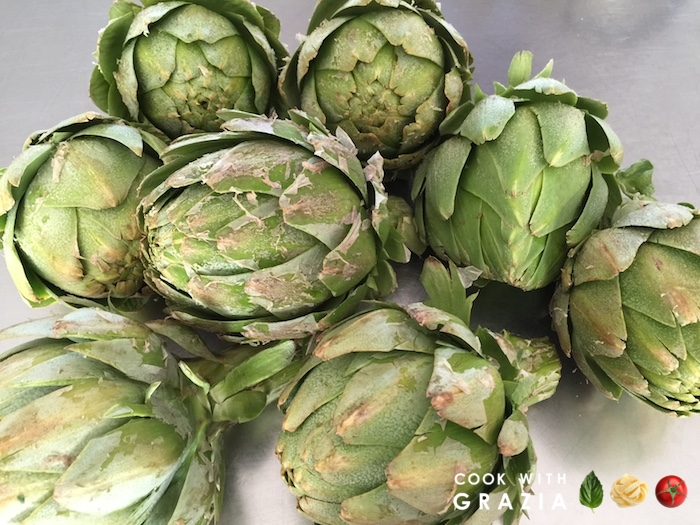
[…] Clean the artichokes following these directions. […]
[…] dish is quite easy to make once you have mastered how to clean an artichoke. As an alternative, you can use frozen artichoke hearts, although I still prefer to use fresh […]
[…] salad is also easy to make, once you have mastered how to clean an artichoke. The main trick is to drop the cut artichokes immediately into lemon-infused water. Raw artichoke […]
[…] Cook the pasta in a large pot of salted boiling water, stirring occasionally until al dente. Time the pasta to be ready in about 25 minutes.Meanwhile, clean and slice the spring onions and asparagus. Clean and slice the artichoke heart as explained here. […]